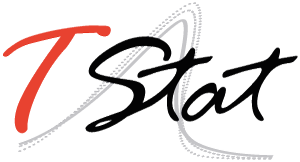Up and Running in Stata provides participants with the necessary introductory toolset to enable them to carry out efficient data analysis and data management in Stata in a reproducible manner. The course covers everything from the very basics, in order to get one up and running in Stata, to an overview of the available Stata commands for preliminary data analysis, data management, importing and exporting data formats, merging of databases and the creation of graphs in Stata.
In common with TStat’s training philosophy, Up and Running in Stata is by its very nature to be considered very much a hands on approach to learning Stata course. Each individual session is composed of both a theoretical component and an applied segment, during which participants have the opportunity to implement the techniques illustrated under the watchful eye of the course tutor.
This course is invaluable to both professionals and researchers (working in Epidemiology, Business Studies, Marketing and Management, Biostatistics, Economics, Epidemiology, Medicine, Public Health, Social and Political Sciences and Statistics), wishing to use Stata for applied statistical analysis, data management or data visualization.
Familiarity with PCs and a working knowledge of English.
SESSION I: GETTING STARTED
- Stata’s GUI
- Stata File formats
- Interacting with your Operating System from within Stata
- Working interactively in Stata
- Organizing one’s work in Stata
- Help
- Web resources
- Updates
- Downloading user written commands in Stata
- Interrupting Stata Sessions
- Loading Stata databases
- Saving databases in Stata
- Saving output: the log file
- Exiting the software
SESSION II: STATA FUNDAMENTALS
- Visualizing the data
- Stata’s Syntax
- Abbreviations in Stata
- Constrained commands
- Data Types
- Format command
- Labels
- Value Labels
- Summarizing the data:
- Summary Statistics
- Statistical Tables
- The by prefix
- Selecting / eliminating variables – drop, keep
- The commands count and sort
- Renaming variables – rename
- display
- assert
- Missing Values
- Create, eliminate, transform data
- generate, egen, replace, recode
SESSION III: CREATING SIMPLE STATA ROUTINES: DO FILES
SESSION IV: IMPORTING DATA FROM SPREADSHEETS
- Importing an Excel file using drop down menus
- Importing an Excel directly in Stata: import excel
- Importing a text file created from a spreadsheet: insheet
- Importing a text file: import delimited
- Importing SPSS databases
- Verifying the Data
- Likely Issues:
- Missing values
- Strings: encode, decode, destring, tostring
- Handling dates
- Exporting data to ASCII/txt files to be read in spreadsheets: outsheet
SESSION V: MERGING DATA BASES
- The concepts master and using databases
- append command
- Merging data
- merge command
- Merging one to one by observations
- Merging one to one using one or more unique identifying variables
- How do we make sure the identifying variables are unique
- The system variables _merge
- updates command
- Use the append and merge commands
- The concepts of wide and long data format
SESSION VI: GRAPHICS – AN INTRODUCTION
- Stata graphics
- Graph command syntax
- Reading, saving and exporting graphs
- Useful commands
- Overview of various graph types
- Personalizing a graph
- The Graph Editor
- Combining and overlaying graphs
SUGGESTED READINGS
- Acock, A. (2023). A Gentle Introduction to Stata. Revised Sixth Edition. Stata Press Publication.
- Kohler, U. & Kreuter, F. (2012). Data Analysis Using Stata. Third Edition. Stata Press Publication.
- Mitchell, M. N. (2020). Data Management Using Stata: A Practical Handbook. Second Edition. Stata Press Publication.
The 2025 edition of this training course will be offered online on a part-time basis on the 20th-21st, 27th-28th of February from 9:30 am to 2:00 pm (on the 20th and 27th) and 9:30 am 1:00 pm (on the 21st to 28th), Central European Time (CET).
Full-Time Students*: € 910.00
Ph.D. Students: € 1170.00
Academic: € 1295.00
Commercial: € 1505.00
*To be eligible for student prices, participants must provide proof of their full-time student status for the current academic year. Our standard policy is to provide all full-time students, be they Undergraduates or Masters students, access to student participation rates. Part-time master and doctoral students who are also currently employed will however, be allocated academic status.
Fees are subject to VAT (applied at the current Italian rate of 22%). Under current EU fiscal regulations, VAT will not however applied to companies, Institutions or Universities providing a valid tax registration number.
The number of participants is limited to 8. Places will be allocated on a first come, first serve basis. The course will be officially confirmed, when at least 5 individuals are enrolled.
Course fees cover: I) teaching materials – copies of lecture slides, databases and StataNow™ programs specifically developed for the course; ii) a temporary licence of Stata valid for 30 days from the day before the course commences.
Individuals interested in attending this training course, must return their completed registration forms by email (training@tstat.eu) to TStat by the 10th February 2025.
ONLINE FORMAT
Up and Running in Stata provides participants with the necessary introductory toolset to enable them to carry out efficient data analysis and data management in Stata in a reproducible manner.
The 2025 edition of this training course will be offered online on a part-time basis on the 20th-21st, 27th-28th of February from 9:30 am to 2:00 pm (on the 20th and 27th) and 9:30 am 1:00 pm (on the 21st to 28th), Central European Time (CET).
